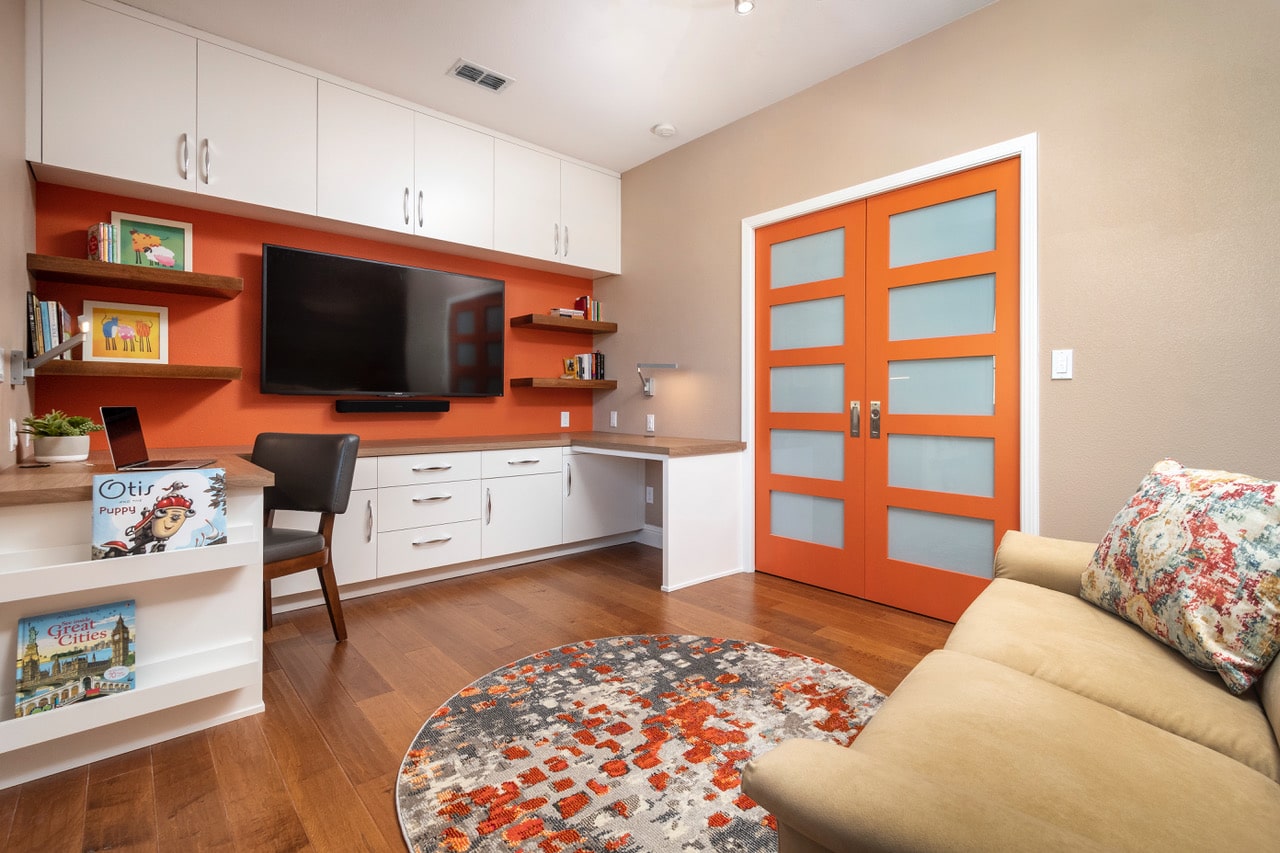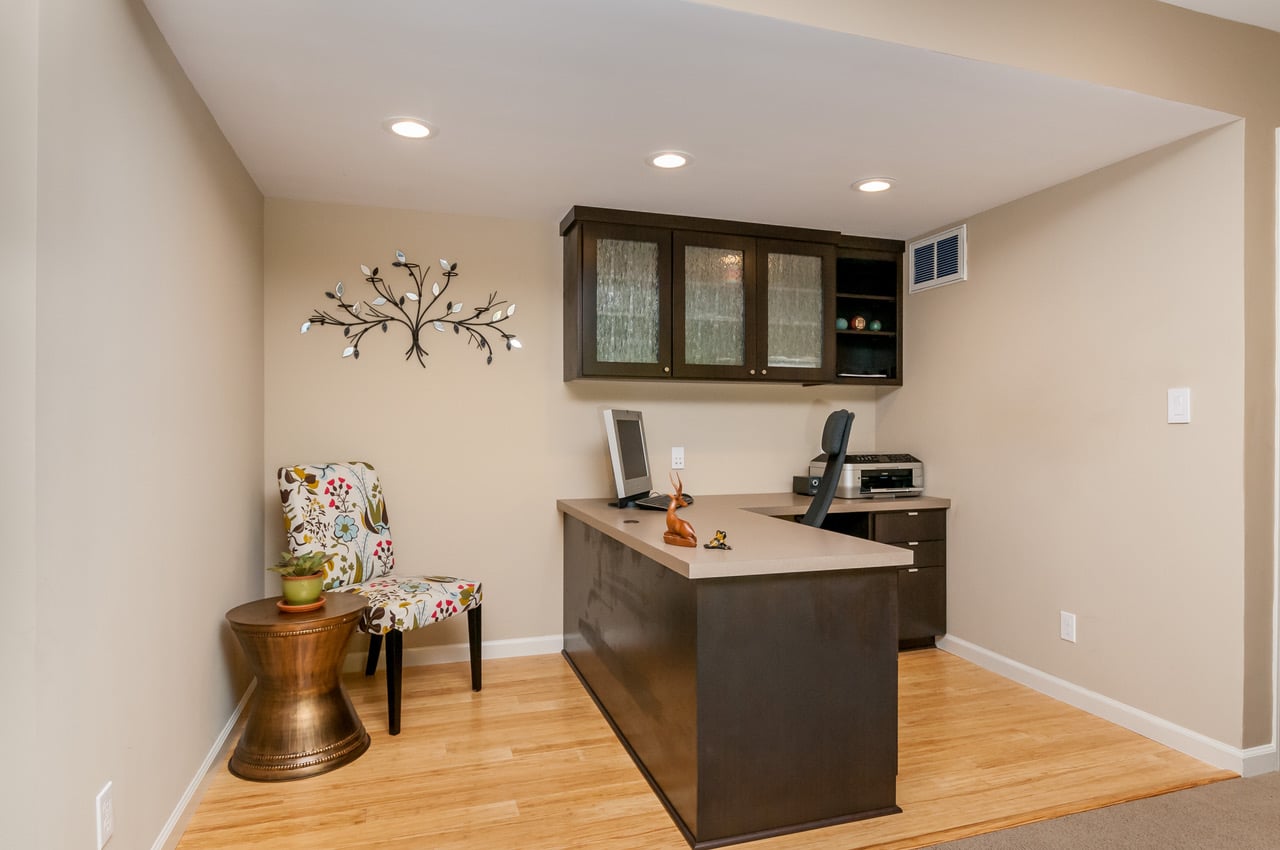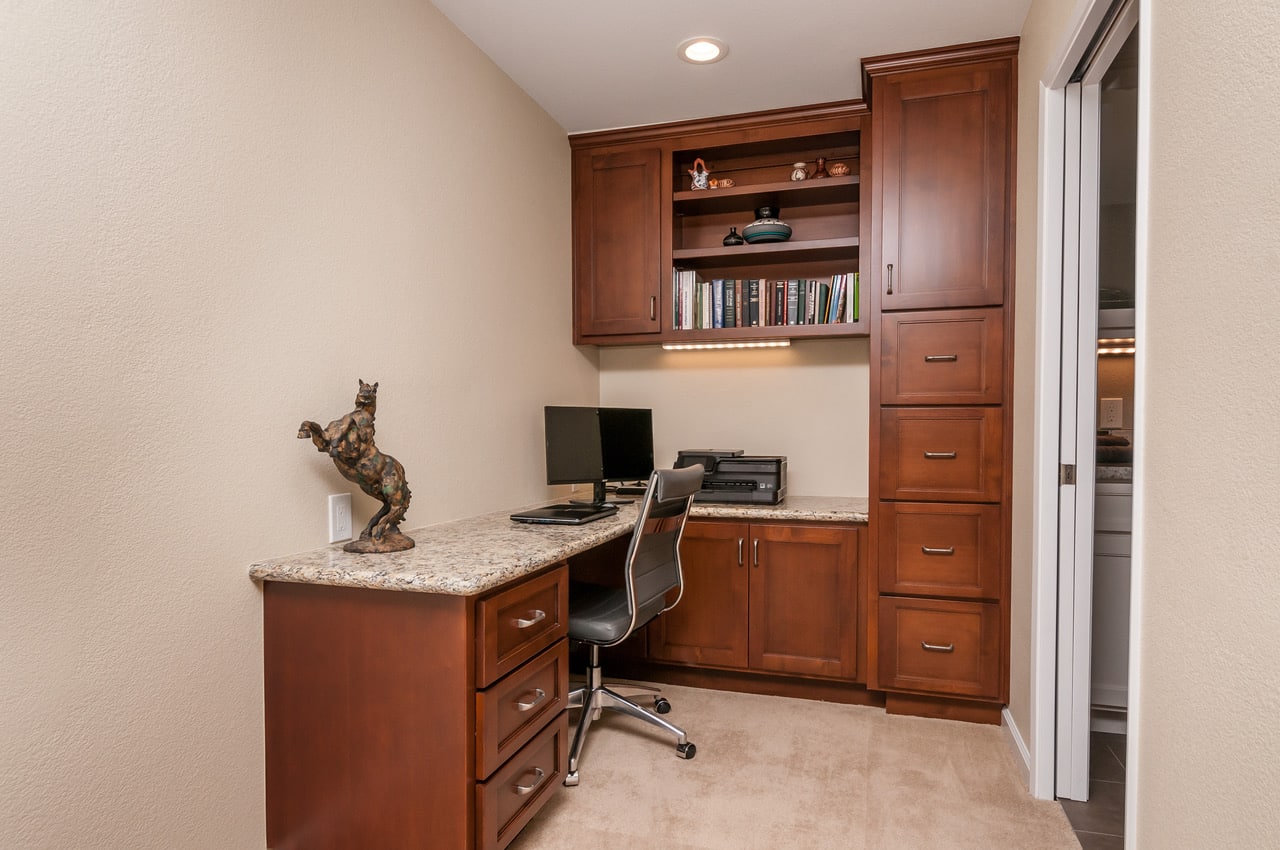The global pandemic has upended all of our lives in one way or another. For those among us who have suffered terrible outcomes such as illness, death, and job loss, I am truly sorry and offer my sincere best wishes for a happier future. This column is not meant in any way to downplay the seriousness of this situation. This column is about interior design, and since we are spending more time at home, perhaps interior design becomes more meaningful. We know that environment plays a big part in people’s mental outlook and feelings of comfort and security.
One particular area that I’ve received many questions about recently is the home office. My business is 20 years old this year, and it’s always been a home-based business. At the very beginning of Anna Jacoby Interiors, I worked at the dining room table and had a computer armoire in the living room. Fast forward five years, when, in 2005, we undertook a large remodeling project that resulted in a dedicated home office for me (and an expanded kitchen also, but that’s another story!) Ahhh, to have my own space, where I can go to work, yet still be part of the family; where I can catch up on emails in my gym clothes, and work at 5am or 11pm if I want to. To me it’s been a luxury to work from home.
For others, it’s been a challenge. Finding space in the house to accommodate the computer, a roomy work space and a nice backdrop for Zoom meetings can be tough. So in this column, I’d like to share some ideas with you.
If your dining room has become your office:
- Create space for your things by repurposing your china cabinet. Formal dinner parties are on hold at the moment anyway, so why not box up the “good dishes,” store them elsewhere, and use the china cabinet for office supplies? This keeps office clutter from piling up on the floor around you and keeps everything tidy and within easy reach.
- For privacy, hang a curtain in the door way, or use a folding screen. This signals to others that you are working and unavailable.
- For Zoom meetings, be mindful of what’s behind you; artwork will be better than a mirror or a window.
- Use an office chair, not a dining room chair. This applies wherever you might be working— ergonomics are very important for your physical health, so invest in a really good chair!
- Bring in extra lighting. A dining room chandelier might not be enough, so consider bringing in a desk lamp or other task lighting to reduce eye strain.
If you are lucky enough to have a dedicated room:
- Arrange your desk so you can look out the window. If this is not possible, hang some beautiful artwork to give you something to look at besides a blank wall.
- Paint the walls a color that makes you happy. I remember one home office I designed years ago; my client wanted an energetic color to get her moving in the morning. We settled on a fun shade of Tangerine for her. Others might want something more calming and peaceful. If this is what you’re after, you’ll never go wrong with light blues, greens or even lavender.
- Use the vertical space for additional storage. Hang wall-mounted cabinets or shelving or use tall bookcases to increase the storage capacity for books, catalogs and other supplies. Keep it all tidy and nicely arranged, especially if it’s going to be seen during Zoom meetings.
- Hire an electrician to add outlets where you need them. Most rooms in the house have woefully few outlets to meet our current needs. Add extra outlets higher on the wall so printers other office equipment can easily be plugged in.
Other unexpected places to carve out some office space:
- A few years ago, I designed a home office space in a family room by removing the old, rarely used wet bar and installing a custom desk.
- In another project, we reconfigured a walk-in closet to create a home office in the client’s bedroom.
- In two current projects, we plan to remove the closet doors and will be outfitting the closet space with a countertop, wall shelves, extra outlets and file drawers.





